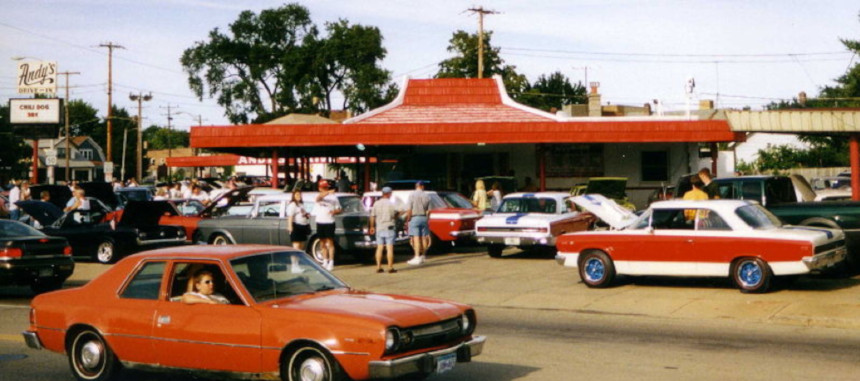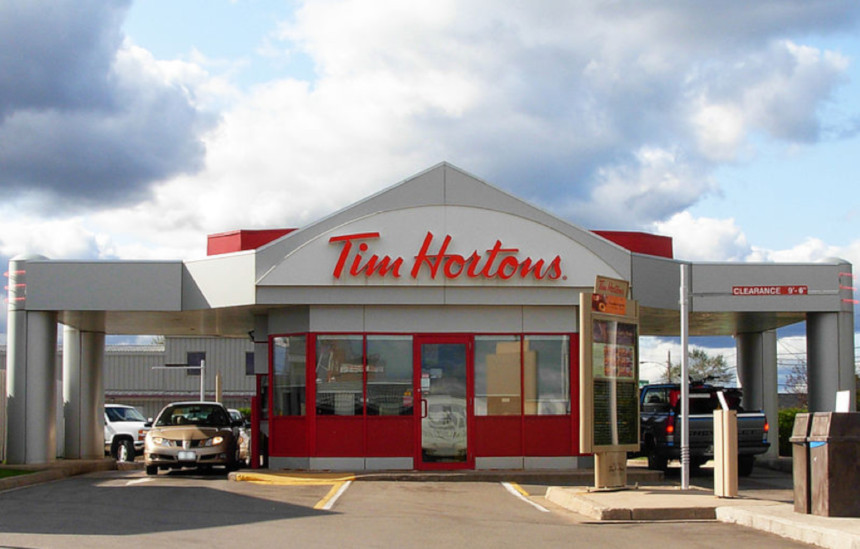Why America Loves a Drive-Through
In the age of drive-through liquor stores and marijuana dispensaries, the drive-through has become an expected commodity of American culture. Whether it is picking up a coffee and breakfast sandwich on the way to work or getting a quick lunch on a road trip, the fast and easy service offered by the drive-through window has shaped out routines and expectations when it comes to food.
Before the drive-through, there was the drive-in. The drive-in, a restaurant where people park their cars and are served through their window, was first mentioned by this magazine in a piece of fiction titled From Eliza and Susan on April 30, 1932. Referred to as a “drive-in-and-eat rotunda,” this phenomenon had actually started a decade earlier in 1921 and slowly spread across America, rising with popularity alongside car culture and Route 66.

The drive-in offered convenience for cross-country travelers and a short break from the road without losing too much time. Adam Chandler, author of Drive-Thru Dreams: Journey Through the Heart of America’s Fast-Food Kingdom, explains how drive-ins “Rose up out of the desire for people to have a place to go.” As they grew more abundant, the restaurants began to compete for efficiency, some introducing car hops (young waiters who serve the cars) on roller-skates for added speed.
The drive-in had become so common-place by the ’40s that a Post article from June 22, 1946, titled Eat and Run declared, “If there is anything more American than apple pie, it is the drive-in.” Despite different themes and décor all drive-ins ran on the same model: Young people providing customers with tasty food at an efficient rate. The drive-in represented America’s ideals in the war era: resourcefulness, speed, and efficiency.
After the drive-in the desire to do everything from the comfort of a vehicle crept into other industries. The first drive-in-movie opened in 1933, and the first drive-up bank window in 1946. The Post even included stories about drive-through flower shops (September 8, 1951) and a drive-in for yachts (November 8, 1946).
The drive-in also sparked the idea of a drive-in market. First reported in What About Supermarkets? From the Post’s September 7, 1938, issue, the drive-in market is described as having “gas pumps, parking space and an L-shaped one-story row of stalls edging it, in which merchants set up a grocery store, a meat market, a fruit-and-vegetable rack, a drugstore, and maybe a little radio or hardware shop, or even a restaurant.”

The idea of being able to pick-up groceries without leaving your car followed the increasing ideals of efficiency, but the drive-in market never really took off. While there are some drive-in markets scattered across the country, they were soon replaced with the supermarket, which became much more popular.
While some drive-ins had already started to allow customers to call in their order ahead of time or order from a walk-up window, the first real drive-through didn’t open until 1947, when Red’s Giant Hamburger started business alongside Route 66 in Missouri. Unfortunately, Red’s closed its doors (and windows) in 1984, making the famous California chain In-N-Out the longest-operating drive-through (the first stand opened in 1948). McDonalds, perhaps the most well-known American fast-food company, did not include a drive-through in their restaurants until the mid-1970s.
And the drive-through took over. Chandler explains how “They got rid of the car hops. They got rid of the utensils. They got rid of the plates and the cups and they gave you everything wrapped in paper or served in paper cups. And this changed the entire dynamic of the experience. They cut the costs from having to hire so many people and focus on efficiency. And it really kind of got rid of this American Affinity for Drive-ins.”
Long a staple of the fast food industry, drive-throughs have been a recent addition of fast casual franchises such as Panera Bread and Steak ’n Shake. Some companies, such as Chipotle, are holding out against the drive-through. Others, like Jack-in the-Box, created drive-through-only locations with no seating areas. Jack-in-the-Box also declared July 24th national drive-through day as a marketing scheme, however there is no one day in which we celebrate drive-throughs.

Since their invention drive-throughs have become a constant factor of fast and fast casual food across America. Drive-Thru Dreams author Chandler explains how the drive-through is the predominant way that people eat fast food. “The car industry actually reflects this,” Chandler notes, with cup-holders becoming more numerous in the 1980s to accommodate on-the-road eating.
Other stores have jumped on the bandwagon. Drive-through liquor stores have been around since 1955 and the first marijuana dispensary with a legal drive-through window opened in Colorado in 2016. Some cities even attempted a funeral home with a drive-through viewing window. Curtains over the window open automatically when a car drives up and mourners have three minutes to pay their respects from the comfort of their car while music plays.
Today we celebrate the pinnacle of American efficiency and the road it took to get there. Driving through the country you have the ability to vote, visit the emergency room, get married, view art, or receive legal advice all via drive-through window. So whether picking up a burger or a ballot, take time to appreciate the fact that the only time we have to get out of our cars is when we reach our destination.

Featured image: Shutterstock